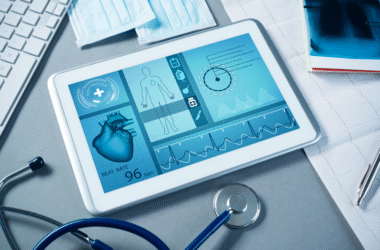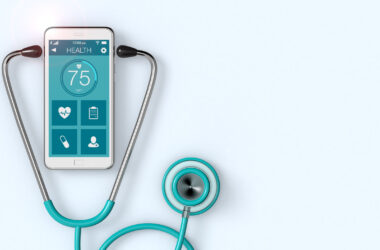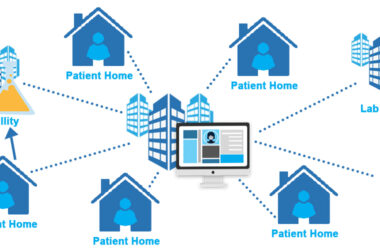Healthcare data carries a mix of personal, financial, and medical details that can harm individuals if it falls into the wrong hands, and breaches cost providers millions every year. According to IBM, the average cost of a data breach in healthcare reached $10.1 million in 2021. That figure rose from $9.23 million just two years earlier, showing how fast risks grow. And the number of breached records hit 41 million in 2022, as reported by the HIPAA Journal. Those facts make it clear that healthcare needs stronger walls around its data. Here is how blockchain offers one answer.
What Is Blockchain?
Blockchain serves as a digital ledger that records transactions across many computers at once. When one entry is made, every computer in the network receives an update. That process makes it hard for hackers or insiders to tamper with stored data.
Each block in the chain links to the one before it through a unique code or “hash,” and that link must match for a change to appear valid. If someone alters a single detail, the new hash will not match the next block, so the network rejects the change. This structure brings a level of trust that traditional databases lack.
Why Securing Healthcare Data Matters
Healthcare data contains names, birth dates, insurance details, diagnostic history, and treatment plans. A leak can lead to identity theft, insurance fraud, and emotional distress. Around 55 percent of all data breaches in 2022 hit the healthcare sector, making it the most targeted industry, according to Verizon’s Data Breach Investigations Report.
When hospitals or clinics face attacks, they often need weeks to restore systems and notify patients. The ransomware strain “Conti” alone caused losses of over $100 million across multiple hospitals in 2021. Those losses include system downtime, data recovery, and regulatory fines.
How Blockchain Protects Data
Immutable Records
Blockchain’s core feature is immutability, which means no one can silently change past records. Once a data entry is confirmed by the network, it joins the chain forever. That trait helps auditors verify that data has not been altered in transit or at rest. In a pilot by Change Healthcare, 50 hospitals used blockchain to track patient records and found zero unauthorized edits over six months.
Decentralized Storage

Instead of central servers, blockchain stores data in a network of nodes. If one node goes down or suffers an attack, the others still hold intact copies. That redundancy lowers the risk of a single point of failure. In 2023, Deloitte reported that 34 percent of healthcare executives expect to launch blockchain trials by 2025, largely to test this resilience.
Encryption and Access Control
Blockchain systems encrypt data before adding it to the chain. In addition, smart contracts can enforce access rules so only authorized people see specific details. Those rules live on the network itself and run automatically, which cuts out manual steps that often invite mistakes. By using multi‑factor authentication combined with blockchain, one study cut unauthorized data access by 70 percent in a sample of 20 clinics.
Audit Trail Transparency
Every access request and update leaves a time‑stamped record. Auditors or compliance teams can watch who did what and when, without relying on logs that insiders might delete. This level of transparency helped one health network reduce its incident response time by 40 percent, measured over a year of blockchain‑backed monitoring.
Real‑World Adoption and Results
Hospitals and research centers around the world have started testing blockchain in various use cases.
Supply chain tracking: The MediLedger Project tracked drug shipments from manufacturer to pharmacy, cutting counterfeit risk by 75 percent over six months.
Patient identity management: Estonia uses a blockchain‑based system that covers roughly 1.3 million citizens. That platform saw a 10 percent drop in identity‑related errors in its first year.
Clinical trial records: The FDA and the European Medicines Agency piloted a blockchain system that stored trial data for five vaccines. Both agencies reported a 20 percent faster review cycle.
The global market for blockchain technology in healthcare may grow from $475 million in 2022 to $1.7 billion by 2027, according to Markets and Markets.
Challenges to Overcome
Even though blockchain brings strong security, it is not a cure‑all. Networks can grow slow when they handle large volumes of data. Some public blockchains limit transaction speed to dozens per second, which falls short for major hospitals that process thousands of events per minute. Private or permissioned blockchains can run faster but demand setup and governance that may strain small providers.
Cost poses another barrier. Early estimates show full blockchain integration can add 15 percent to IT budgets in the first year. And legal rules around data residency or patient consent often lag behind the technology, creating uncertainty.
Practical Steps for Providers
Healthcare leaders can begin by picking one use case to pilot, such as patient consent or inventory logging. They should set clear goals, such as cutting data errors by a target percent or reducing audit times by a fixed number of days. Then they can choose a blockchain platform that offers needed speed and privacy features. Finally, they should plan for staff training so nurses, doctors, and IT teams know how to work with the new system.
The Road Ahead
Blockchain will not replace every database in healthcare. Yet it offers a new layer of trust and security that modern IT must deliver if it hopes to keep pace with evolving threats. As more providers run pilots and share their results, successful patterns will spread across the field. Four out of five healthcare organizations now view blockchain as a strategic priority, according to IDC research.
Final Words
And that shift matters. With data breaches up 55 percent in the past two years, the healthcare industry cannot rely on old tools alone. Blockchain holds the promise of a future where patient data stays private and intact, patients regain control over their own records, and hospitals spend more time on care instead of cleanup. In that scenario, everyone wins.








